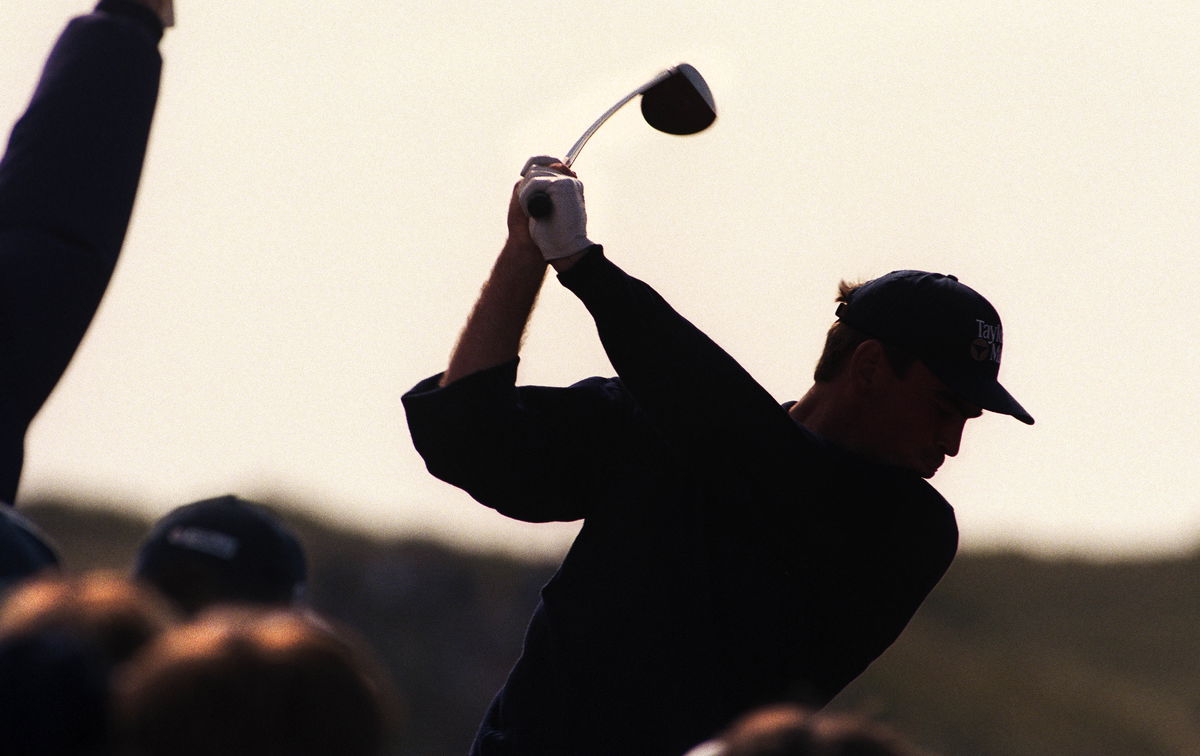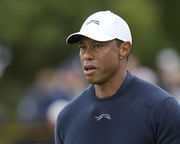
Getty
Silhouetted golfer on the tee during the 127th British Open Golf at Royal Birkdale GC in Southport 16th-19th July 1998. (Photo by David Ashdown/Getty Images)

Getty
Silhouetted golfer on the tee during the 127th British Open Golf at Royal Birkdale GC in Southport 16th-19th July 1998. (Photo by David Ashdown/Getty Images)
At 6,620 yards, Cypress Point Club sits nearly 1,000 yards shorter than the monster tracks modern players face weekly. Yet Dean Robertson believes this length difference gives his underdog GB&I squad the perfect weapon against America’s power-obsessed stars.
Watch What’s Trending Now!
The 55-year-old Scot carries painful memories from his own Walker Cup disaster. Back in 1993 at Interlachen, Robertson watched helplessly as Team USA demolished GB&I 19-5 in the most lopsided defeat in Walker Cup history. Despite his personal victory over legendary Jay Sigel, the overall result still haunts him three decades later.
Now serving as the first professional captain in GB&I Walker Cup history, Robertson has turned that trauma into tactical gold. His message to the Americans is crystal clear: “This is a course that demands ‘manners.’ And if you don’t have those, you are going to be humbled quite quickly. Maybe even embarrassed.”
ADVERTISEMENT
Every hole at Cypress Point, guided by club member @CondoleezzaRice.
Happy Walker Cup week. pic.twitter.com/d22TQV75no
— USGA (@USGA) September 1, 2025
Robertson’s warnings aren’t empty threats. His reconnaissance team spent October 2024 dissecting every nuance of Alister MacKenzie’s 1929 masterpiece. Five GB&I players walked the grounds, studied approach angles, and mapped out tactical strategies while their American counterparts remained focused on distance-heavy preparation.
“We are going to need our players to compete with what I call ‘strategic intelligence,'” Robertson declares. “The modern game is more and more about pure distance and speed. But Cypress Point is not quite like that.”
ADVERTISEMENT
The numbers tell Robertson’s story perfectly. Most approach shots at Cypress Point fall between 40-100 yards – a completely different challenge from the long irons and hybrids dominating today’s game. Those delicate wedge shots demand touch, feel, and precision rather than aggressive spin rates and launch angles.
“Those shots will need to be controlled,” Robertson explains. “They can’t be hit flat-out with lots of spin. They need to be caressed. So the craft of the game will come to the fore. It’s not going to be about science. Art will have its place.”
ADVERTISEMENT
His tactical philosophy extends beyond individual shots. Players must navigate Cypress Point like chess masters, plotting each move while keeping balls below hole locations. Power without precision becomes a liability rather than an asset. Robertson’s confidence stems from witnessing his players execute this exact strategy during their recent St Andrews Trophy triumph, where tactical discipline proved more valuable than raw distance.
Top Stories
Charlie Woods Turns Heads With Rare Scottie Scheffler Interaction After Disappointing Career Update

Hideki Matsuyama Puts on a Show and Stops Scottie Scheffler From a Three-Peat

Tiger Woods Gives Fan 1-Word Reply About PGA Tour Comeback Amid Leaked Schedule

What Happened to Golf Creator Brad Dalke’s Wife? Health Update Revealed

Paige Spiranac Rubs Salt in Colt Knost’s Wounds With Latest Comments on His Amateur Golf Dreams

Cypress Point’s design philosophy neutralizes modern advantages
MacKenzie’s genius lies in creating risk-reward scenarios that punish mindless aggression. The course features numerous short par-4s, where drivers become a dangerous weapon in the wrong hands. Meanwhile, the Pacific Ocean lurks menacingly alongside several holes, turning errant shots into watery graves.
ADVERTISEMENT
This architectural philosophy directly contradicts modern golf’s obsession with distance. While contemporary courses stretch beyond 7,300 yards to challenge today’s technology, Cypress Point achieves the same difficulty through strategic complexity rather than raw length. The design forces players to think three shots ahead rather than simply unleashing maximum power.
The course’s unique demands explain why the Walker Cup format attracts golf’s top players as a proving ground for their professional careers. Stars like Tiger Woods, Scottie Scheffler, and Collin Morikawa all used Walker Cup success as springboards to greatness. However, their success came through adapting to course demands rather than overpowering them.
Cypress Point’s emphasis on course management over crushing drives could significantly level the playing field. Robertson’s team arrives with fresh momentum from their commanding 16.5-8.5 St Andrews Trophy victory over Continental Europe—an eight-point demolition that showcased their tactical discipline against quality opposition.
ADVERTISEMENT
“You have to plot your way round, keeping the ball below the hole,” Robertson concludes his warning. “Do that and you will be hard to beat.”
September 6-7 will reveal whether America’s world-ranked stars can adapt their power games to MacKenzie’s strategic masterpiece. Robertson’s confident his underdogs possess the “manners” Cypress Point demands – while questioning whether their favored opponents understand the punishing lessons awaiting them on the Monterey Peninsula.
ADVERTISEMENT
ADVERTISEMENT
ADVERTISEMENT

.png?w=50&h=50)
